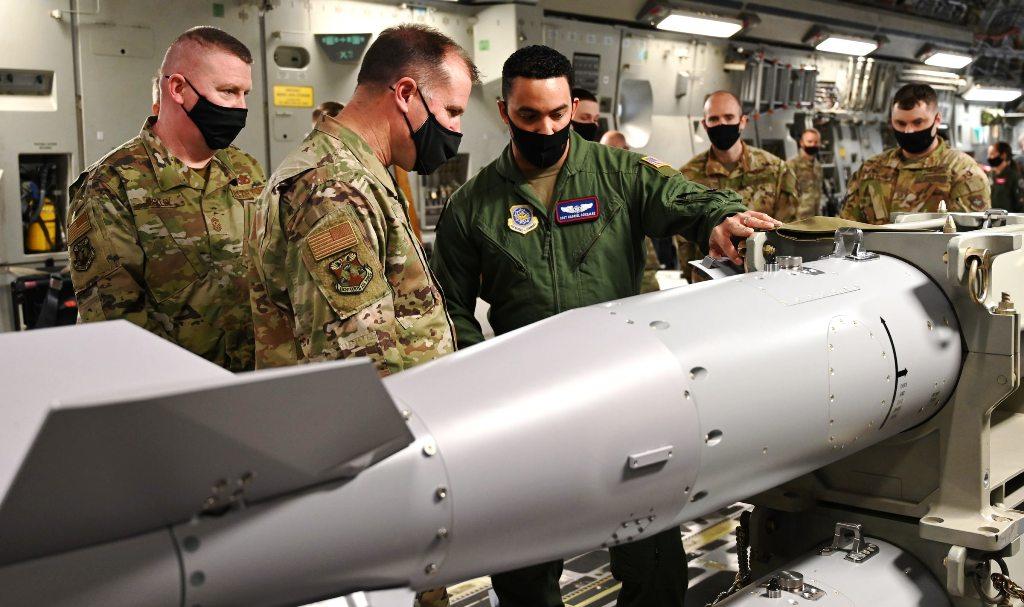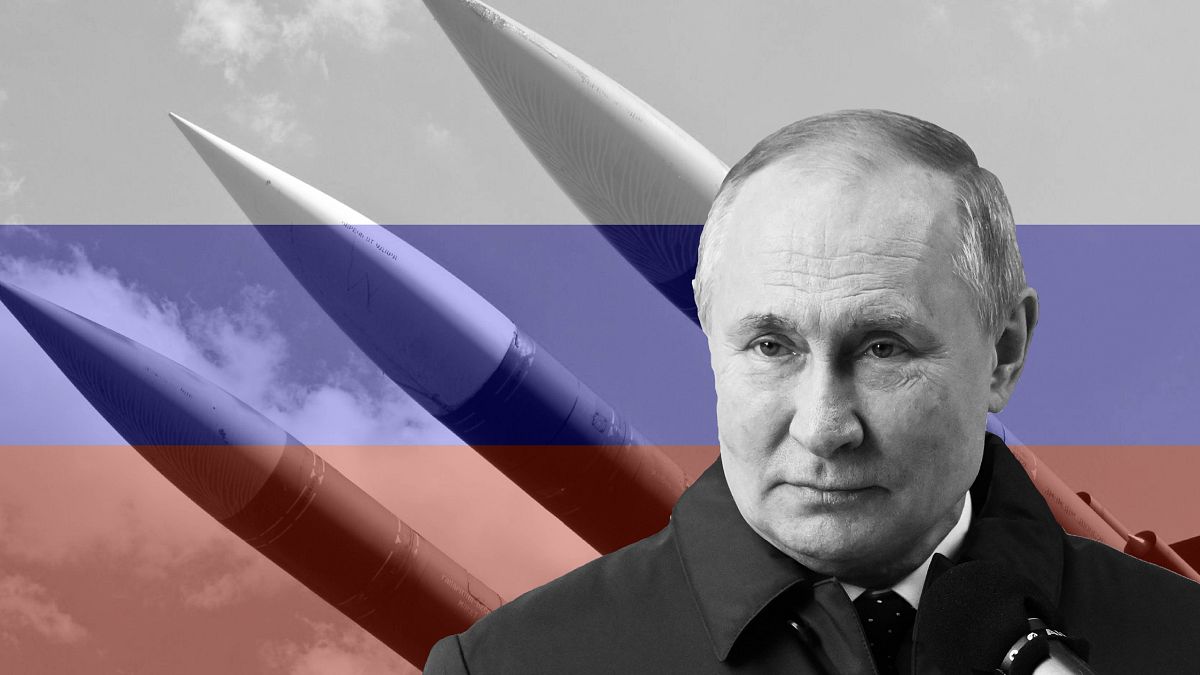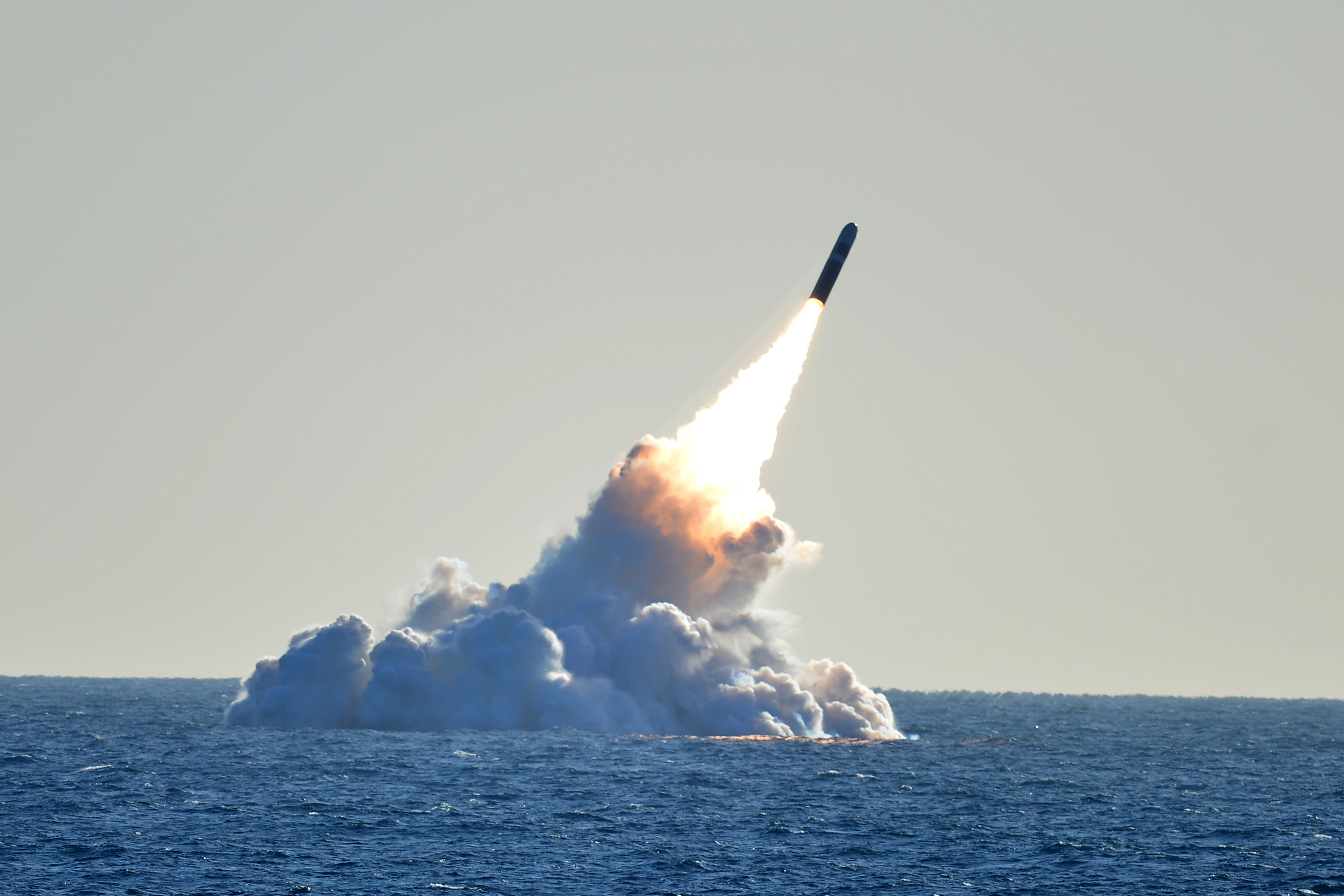News
Biden Sends B61-12 Tactical Nuclear Weapons to Europe

On Saturday, Russia’s Deputy Foreign Minister Alexander Grushko stated that the rapid deployment of updated US B61 tactical nuclear weapons at NATO facilities in Europe would lower the “nuclear threshold” and that Russia would factor the move into its military strategy.
Russia’s invasion of Ukraine had sparked the most serious clash between Moscow and Washington since the 1962 Cuban Missile Crisis when the two Cold War superpowers came dangerously near nuclear war.
Russia has approximately 2,000 operational, tactical nuclear weapons, whereas the US has approximately 200 such weapons, half located at facilities in Italy, Germany, Turkey, Belgium, and the Netherlands.
According to Reuters, the US told a confidential NATO meeting to speed the deployment of the B61-12, an upgraded variant of the B61, with the new bombs arriving at European locations in December, several months earlier than intended.
“We cannot ignore the intentions to modernize nuclear weapons, especially the free-fall bombs that are being deployed in Europe,” Russian Deputy Foreign Minister Alexander Grushko told reporters.
According to studies by the Federation of American Scientists, the 12-foot B61-12 gravity bomb has a lesser yield nuclear payload than many previous variants but is more accurate and can penetrate below ground.
“The US is updating them, boosting their precision and reducing the force of the nuclear charge, turning these weapons into ‘battlefield weapons,’ lowering the nuclear threshold,” Grushko explained.
The US begins production of its latest tactical nuclear weapons.
The Biden Administration unveiled a new defence strategy Thursday that puts the United States on a Cold War-era footing with China and Russia, outlining a plan to confront two nuclear peer adversaries for the first time in history with a multi-year build-up of modernized weaponry, strengthened foreign alliances, and a total overhaul of the American nuclear arsenal.
The 80-page book serves as the Administration’s plan for global security in the coming decades, stating unequivocally that the United States faces two formidable but very distinct competitors.
It sees China as a long-term “pacing challenge” because of its expanding military projection in the Pacific region, while Russia is an immediate “acute threat” because of its ongoing war with Ukraine and repeated threats to launch a nuclear strike.
“We deliberately chose the word ‘acute,'” Defense Secretary Lloyd Austin told reporters at the Pentagon. “Unlike China, Russia cannot long-term challenge the United States, but Russian aggression poses an urgent and severe threat to our interests and principles.”
In recent weeks, Russian missile assaults on civilian targets in Ukraine and unsubstantiated allegations of a pending “dirty bomb” detonation have fueled worries that the world is on the verge of nuclear Armageddon.
According to Austin, the Administration is deeply concerned about the conflict’s escalation, but it remains committed to providing Ukraine with weapons and the means to defend itself.
Russian President Vladimir Putin has often discussed the use of nuclear weapons in the eight-month-old conflict, and this week oversaw nuclear drills involving Russian submarines, bombers, and ballistic missile launches within Russia.
Austin dismissed suspicions that the war drills were a cover for a genuine nuclear assault, saying US intelligence had found no evidence of such preparations.
He said senior Russian officials had privately stated that there are no plans to use a nuclear bomb in Ukraine, but the US remained wary.
“It would be the first time in almost 70 years that a nuclear bomb has been used, so that certainly has the potential to change things in the world community,” Austin added. “We will continue to explain that any type of use of a weapon of that type, or even the discussion of such usage, is hazardous and irresponsible.”
Meanwhile, China is portrayed as the “most relevant strategic competitor for the future decades” in the strategic plan. According to the US, Beijing is actively working to undercut US alliances with Asian partners by strengthening its military and nuclear forces and threatening to invade the US-allied island of Taiwan.
“China is the only challenger out there with both the will and, increasingly, the power to remake the international system,” Austin said.
The Administration has concluded that Beijing intends to triple the number of nuclear weapons to 1,000 by 2030 while also building hundreds of additional silos capable of firing long-range ballistic missiles that hit the United States and its far-flung nuclear troops.
While the United States has a more than 10-to-1 edge over China regarding nuclear warheads and delivery systems, the Pentagon sees a need to prepare for the decades ahead.
The Chinese nuclear buildup is an unprecedented challenge for the military, which has only had to focus on deterring one near-peer adversary—formerly the Soviet Union, now Russia—from launching a nuclear assault since World War II’s end.
“I do not want to imply that this is a solved or closed situation and that we now have the answers,” a senior defence official who was not authorized to talk publicly on the subject told reporters.
“This is uncharted ground for us… How can you combat one opponent with enough reserves to keep the other at bay? And the second element of that cannot be a solution in which we need 2,000 nuclear warheads if China has 1,000 and Russia has 1,000 because that would be an arms race that no one wants to be in.”
More here: Inside America’s $100 Billion Mission to Modernize Its Aging Nuclear Missiles
Austin’s proposal departs significantly from President Joe Biden’s campaign commitment to diminish the role of nuclear weapons in US strategy.
There are hints toward disarmament, such as directions to stop developing nuclear-armed sea-launched cruise missiles, retire the heaviest gravity bomb in the US arsenal, the B83, and end the avowed strategy of keeping nuclear weapons as a “hedge against an unpredictable future.”
However, the big improvement that non-proliferation experts had hoped for has not occurred.
“It substantially maintains the nuclear deterrence strategy and posture, including capabilities added during the Trump Administration.” “It is unclear how it decreases the role of nuclear weapons as the President instructed,” says Leonor Tomero, Biden’s Deputy Assistant Secretary of Defense for nuclear and missile defence until October 2021.
“There is an urgent urgency to lower the risk of nuclear war, particularly when nuclear tensions are at their highest in years.”
According to Tomero, the hazards of miscalculation and unexpected quick escalation could lead to the use of nuclear weapons. “To avoid these dangers, these new threats necessitate clear solutions and effective efforts to adapt and reinforce deterrence,” she says.
Under a bilateral deal known as New START, the United States and Russia are currently limited in the number of strategic warheads and delivery systems until February 2026.
On the other hand, China is not a signatory to the pact and has shown no evidence of trying to rein in its nuclear weapons programs, raising concerns about whether further nuclear armament reductions by other countries will be achievable.
“There are repeated references to adjusting US posture in the future, which sets up a future Administration to increase the size of the arsenal or resume nuclear testing,” says Jeffrey Lewis, an analyst at the Middlebury Institute of Strategic Studies’ James Martin Center for Nonproliferation Studies.
The administration is particularly concerned about the growth of non-nuclear weapons systems, such as hypersonic missiles, and space-based and cyber capabilities.
The strategy calls for “creating enduring advantages,” which includes investments in the Defense Department’s people, changes in weapon-buying processes, and climate change preparation.
Other threats mentioned in the dossier include Iran and North Korea and “violent extremist organizations,” which is military lingo for terrorist groups.
The Biden team’s focus on Moscow and Beijing is consistent with the US national security complex’s aim to shift away from the Middle East’s quagmire of conflict and counter-terrorism operations and engage in Great Power competition.
Congress requires each administration to produce a new national defence policy every four years, and two versions are created: one secret and one public.
The strategy, unveiled on October 27, was the first time it incorporated the so-called Nuclear Posture Review and Missile Defense Review, which affected funding allocations for the following years.
“By weaving these documents together,” Austin explained, “we assist guarantee that the entire department is going ahead together and that our resources are aligned with our goals.”






































